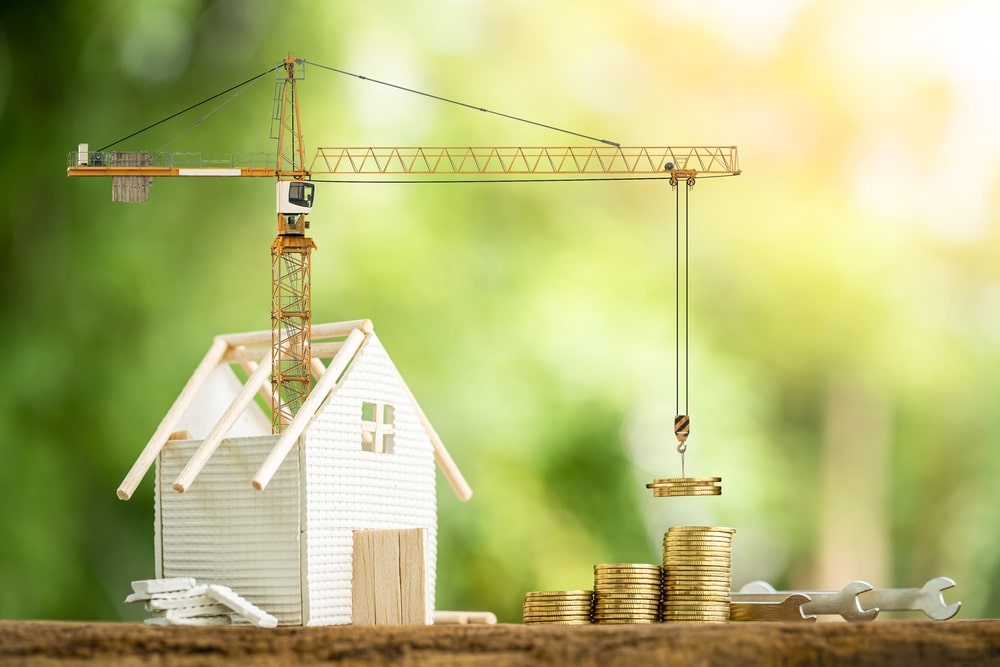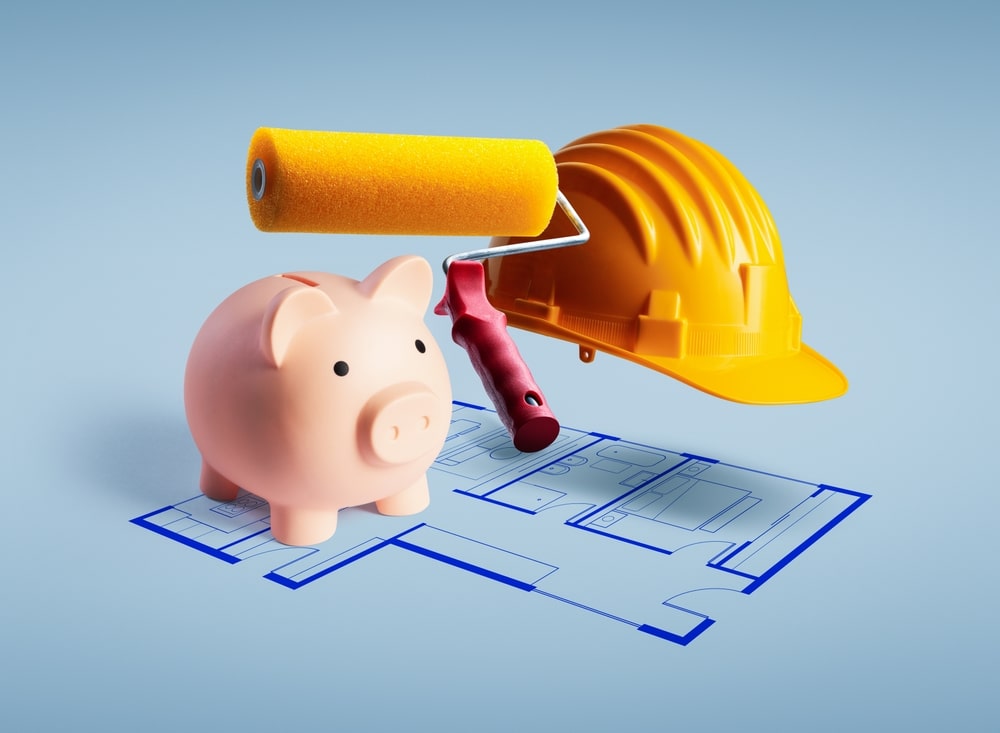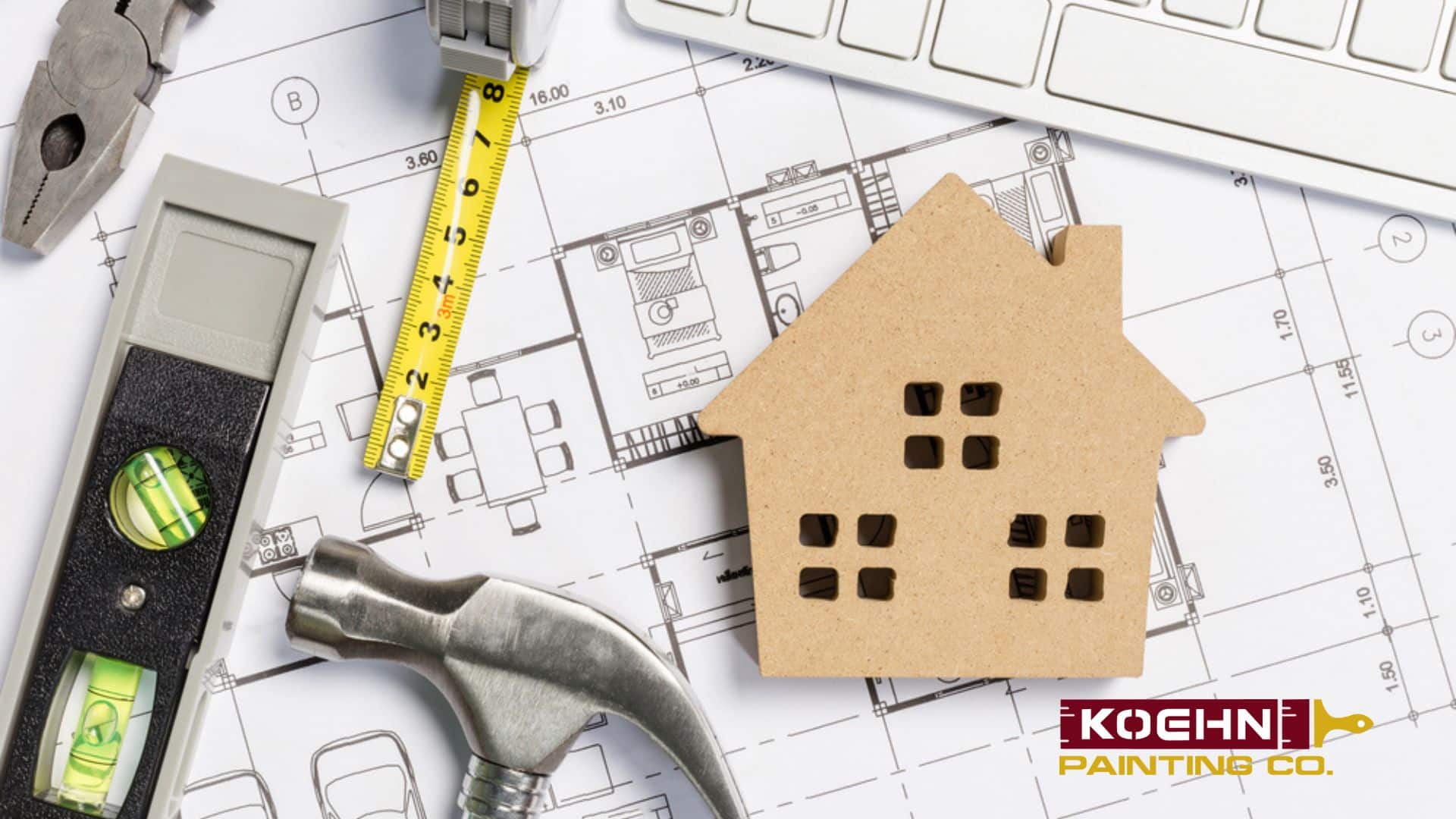Table of Contents
ToggleAre home improvements tax-deductible? Many homeowners assume any upgrade to their home qualifies, but the IRS takes a much narrower view. Routine repairs like repainting or fixing gutters rarely qualify, unless tied to a home office or rental space. The real tax value often lies in capital improvements—permanent upgrades that add value, extend the home’s life, or adapt it for new uses.
While these costs usually aren’t deductible in the year they’re made, they can be added to the home’s “cost basis,” reducing taxable gains when the property is sold. Examples include roof replacements, kitchen remodels, HVAC upgrades, and energy-efficient windows. Special situations, like medically necessary modifications or qualifying energy-efficiency projects, may offer immediate benefits in the form of tax credits or itemized deductions.
The IRS defines capital improvements as permanent changes that significantly enhance a property, and documentation is key for claiming any related tax benefits. Receipts, contracts, and before-and-after photos should be kept for years.
Certain improvements—such as those for a qualifying home office or rental unit—may be depreciated or partially deducted sooner. Energy-efficient upgrades can earn federal tax credits worth up to $3,200 annually, while medically necessary renovations can sometimes be deducted as medical expenses.
Ultimately, knowing the IRS rules and tracking every improvement ensures homeowners can maximize tax savings—whether immediately through credits or later when reducing capital gains upon sale. Let’s dive deeper into this.
What Makes a Home Improvement Tax-Deductible?
Homeowners might assume that any money spent upgrading their house can somehow be written off, but that’s not how the IRS sees it. While some home improvements may provide a tax benefit, the majority don’t qualify for immediate deductions. The key is understanding the difference between what’s deductible, what’s not, and what might help you down the road, especially when it comes time to sell.
What Does “Tax-Deductible” Actually Mean?
In tax terms, a deduction is an expense that lowers your taxable income. Fewer taxable dollars result in a smaller tax bill. However, not all home-related expenses are deductible in the year you pay them. The IRS generally doesn’t let homeowners deduct most improvement costs in that year unless the project meets specific criteria—such as energy efficiency upgrades or modifications made for medical reasons.
But that doesn’t mean the expense is useless from a tax perspective. Many types of improvements can be added to the “cost basis” of your home, which impacts how much capital gains tax you owe if and when you sell the property.
Tax Deductible vs. Non-Deductible Home Improvements
Here’s where things get a little technical. Home improvements fall into two main buckets, capital improvements and non-deductible repairs, and those are different in the eyes of the IRS.
Capital Improvements are permanent upgrades that add value to your home, extend its useful life, or adapt it to new uses. While they’re not deductible right away, you can add them to your cost basis, which can lower your taxable profit when you sell your home. That’s a win down the road.
Some examples include:
- Installing a new roof
- Remodeling a kitchen or bathroom
- Replacing HVAC systems or adding central air
- Finishing a basement
- Installing new plumbing or wiring
- Putting in an addition or a deck
- Upgrading to energy-efficient windows or doors
These types of projects are seen as adding long-term value to the property and are tracked for capital gains purposes.
Non-deductible improvements, on the other hand, and usually applied to most homeowners, are not considered general home repairs to be deductible, according to the IRS. These include routine fixes and maintenance tasks that don’t add lasting value or prolong the life of the home. In other words, repairs keep your home in good shape, but they don’t count as capital improvements.
Examples of non-deductible repairs include:
- Repainting rooms
- Fixing leaks
- Repairing broken windows or gutters
- Patching drywall
- Replacing worn-out flooring (if it’s just a maintenance swap, not a major upgrade).
So, unless the project substantially transforms your home, it’s likely not deductible.
The IRS Perspective: Capital Improvements
The IRS defines capital improvements as additions or upgrades that meet the following criteria:
- They “substantially add” value to the property.
- They extend the useful life of the home.
- They are permanent in nature, meaning they are not easily removed or reversed.
These improvements aren’t taxed directly, but they affect how much tax you’ll pay when you sell your home. When it’s time to calculate your capital gain, you’ll subtract your adjusted cost basis (what you paid for the home plus the cost of any capital improvements) from the sale price. The higher your basis, the lower your taxable profit.
For example, if you bought your home for $300,000 and later invested $50,000 in qualifying improvements, your adjusted cost basis becomes $350,000. If you sell the house for $500,000, you’ve only made a $150,000 gain, not $200,000. That difference could mean thousands in tax savings, especially if your profit exceeds the IRS exemption thresholds ($250,000 for single filers, $500,000 for married couples filing jointly).
None of this matters if you can’t prove it. The IRS recommends keeping detailed records of improvements, including:
- Receipts
- Contracts
- Canceled checks
- Before-and-after photos
You should hold onto these for at least three years after filing, or longer if you still own the home. It’s smart to organize them in a dedicated “home improvements” folder (both physical and digital).
Can You Write Off Home Repairs on Your Taxes?

So, can you write off home repairs on your taxes? Here’s the quick answer: If your home is solely your personal residence, you generally cannot deduct repair costs. However, there are a few important exceptions. Let’s break it down.
For most homeowners, common repairs—like fixing gutters, repainting a room, or patching a leaky pipe—don’t qualify for a tax deduction. These are considered routine maintenance that doesn’t add long-term value or extend your home’s lifespan, so the IRS doesn’t offer a write-off. In fact, the IRS clearly states that home repairs used solely for personal purposes are not deductible.
That leads to a common question: are home improvements tax-deductible if they’re just repairs? The answer is no. Repairs alone don’t qualify unless they’re directly tied to specific business or rental use.
That being said, there are situations where repair costs can be written off if your home serves other purposes:
- Home office use: If you operate a business from home and have a dedicated space that qualifies as your principal place of business, you may deduct repair expenses for that area. The IRS allows you to deduct the portion of the cost that applies to your business-use space. If the repair directly benefits only the office space—like replacing a window exclusive to that room—that’s fully deductible. If it benefits the whole home (say, repainting every room), you prorate it based on the percentage of the home used for business. You’ll report these expenses using Form 8829, or use the simplified method, which calculates deductions based on $5 per square foot (up to 300 sq ft) [IRS Topic 509].
- Renting out part of your home: If you rent out a portion of your home—either to long-term tenants or short-term guests—you can deduct repair costs that directly impact that rented space. Shared property repairs are deducted proportionally based on the business-use percentage.
But why does the IRS distinguish between repairs and improvements? The IRS handles repairs differently from improvements for a purpose. Repairs only bring the property back to its original state but do not boost its value or lifespan. Therefore, in most cases, they are not included in your tax return as either deductions or additions to your cost basis, unless they fit one of the exceptions mentioned above.
Recording and documenting these expenses is crucial. If you qualify for deductions, you’ll need receipts, photos, and accurate estimates of business-use percentages. Now that we’ve clarified when and how repairs can be deducted, let’s look into the home improvement tax deduction and which upgrades might actually help lower your tax bill.
Contact us here if you would like to find the best painting contractor for your residential or commercial painting needs.
Home Improvement Tax Deduction: What Qualifies?

If you’ve ever wondered, “Are home improvements tax-deductible?”—you’re not alone. It’s one of the most common questions homeowners ask during tax season, especially after spending thousands on upgrading their property. While there are some home improvement tax deduction opportunities, they’re more limited and nuanced than many people realize.
Let’s clear things up and break down what types of improvements can help reduce your tax liability, whether through immediate credits, long-term deductions, or savings when you eventually sell your home.
What Counts Toward a Home Improvement Tax Deduction?
While most improvements don’t qualify for a direct deduction in the year they’re made, some may lead to valuable tax benefits depending on the type of work done and how the home is used. These fall under three primary categories:
- Tax credits for energy-efficient upgrades
- Capital improvements that increase your home’s cost basis
- Deductions tied to home office or rental use
Let’s explore them in detail.
Energy-efficient upgrades (tax credits you can claim now)
Certain energy-related improvements qualify for the Energy Efficient Home Improvement Credit, which covers up to 30% of eligible expenses—potentially saving you thousands.
These are not technically deductions, but tax credits, which means they reduce your tax bill dollar for dollar (a much bigger win than a deduction).
Qualifying improvements include:
- ENERGY STAR-certified windows (up to $600)
- Exterior doors (up to $250 per door, $500 total)
- Home energy audits (up to $150)
- Heat pumps, biomass stoves, and other qualifying clean-energy systems (up to $2,000/year)
- Insulation, upgraded HVAC, and certain roofing materials
You can claim up to $3,200 per year in credits, with no lifetime cap. That means you can make improvements over multiple years and still benefit annually.
Medically necessary improvements (deductible as medical expenses)
Home modifications made for medical reasons may qualify as itemized deductions under medical expenses. According to IRS home improvement deductions rules, these improvements must be made primarily for medical care and not just for convenience.
Examples of deductible medical home improvements:
- Installing wheelchair ramps or stair lifts
- Widening doorways or hallways for accessibility
- Lowering kitchen cabinets or sinks
- Installing support bars and railings in bathrooms
- Specialized fire alarms or visual alert systems
If the improvement doesn’t raise your home’s value, the full cost might be deductible. If it does, only the amount above the value increase can be deducted.
Home office improvements (deductible over time)
As covered before, repairs to a qualifying home office may be deductible in the same tax year. But what about larger upgrades?
Capital improvements to your home office—such as replacing windows, adding built-in shelving, or upgrading electrical wiring—are not immediately deductible, but they can be depreciated over time if you’re self-employed. You can deduct a portion of the cost each year, based on the percentage of your home used for business.
Improvement to rental properties
If you rent out part of your home or own an investment property, upgrades made to that portion of the property are generally depreciated over time, not deducted immediately.
Common capital improvements to rental spaces:
- Kitchen and bathroom renovations
- New HVAC or plumbing systems
- Roof replacements
- Upgraded flooring or appliances
- Attic insulation or weatherproofing
These are depreciated over 27.5 years (for residential rental property), which may not provide immediate relief but offer consistent deductions year after year.
General capital improvements: long-term tax strategy
Most major renovations to your primary residence don’t provide immediate tax deductions, but they’re still valuable. According to the IRS home improvement deduction guidelines, improvements that add value, extend the home’s lifespan, or allow for new uses can be added to your home’s cost basis. This means that when you sell your house, the money spent on improvements can lower your taxable capital gains, potentially saving you a significant amount.
Qualifying capital improvements include:
- Installing a new roof or HVAC system
- Kitchen or bathroom remodels
- Finishing a basement or attic
- Adding a deck, porch, or garage
- Upgrading electrical systems
- Installing water softeners or energy-efficient windows
These expenses are tracked and included in your “adjusted cost basis,” which plays a key role when you sell.
How Home Improvements Can Reduce Taxes When You Sell
You’ve probably heard that if you sell your home at a profit, part of that gain may be tax-free. That’s true, but only up to a point.
Under Section 121 of the IRS code, if you’ve lived in the home for at least 2 of the past 5 years:
- The first $250,000 of gain is tax-free for single filers
- The first $500,000 is tax-free for married couples filing jointly
But if your profit exceeds that? That’s where your cost basis comes in.
So, what home improvements are tax-deductible when selling?
Technically, they’re not deductions in the year they’re made, but they become powerful tax-saving tools when the home is sold.
Let’s say:
- You bought your home for $300,000
- Over the years, you spent $75,000 on capital improvements (kitchen remodel, roof, HVAC, etc.)
- Your adjusted cost basis is now $375,000
- You sell the home for $600,000
- Your taxable gain is only $225,000—not $300,000
That could be the difference between paying taxes or paying nothing, depending on your filing status.
This is why keeping detailed records—receipts, invoices, before/after photos—is essential. Without documentation, the IRS won’t allow you to adjust your cost basis, which could result in a higher tax bill.
FAQs About Tax Deductible Home Improvements
1. Are home improvements tax-deductible?
Generally, no. Most improvements don’t qualify for immediate deductions. However, some may benefit you later (like capital improvements when selling), or qualify for credits in specific circumstances. Read above.
2. What is a “home improvement tax deduction” in practical terms?
It refers to improvements that either earn a tax credit now (e.g., energy-efficient upgrades) or adjust your home’s cost basis to lower capital gains tax when selling.
3. Can you write off home repairs on your taxes?
Only in limited cases, like for a qualifying home office or rental portion. Most repairs (e.g., painting, gutter fixes) aren’t deductible.
4. What qualifies under IRS home improvement deductions for energy credits?
Qualified improvements—including ENERGY STAR windows, insulation, and heat pumps—can get a credit of 30% of cost, up to $3,200 annually, through 2032.
5. What home improvements are tax-deductible when selling?
Capital improvements like new roofs, remodels, or upgraded systems can be added to your home’s cost basis, reducing taxable gain upon sale.
Are Home Improvements Tax-Deductible: Final Thoughts

When tax season rolls around, it’s natural to ask: are home improvements tax-deductible? As we’ve discussed, the answer isn’t as simple as most homeowners hope, but that doesn’t mean there aren’t good opportunities to save.
Most home improvements, especially those made to your personal residence, won’t lead to an immediate deduction on your tax return. Repainting a room, fixing a broken window, or upgrading worn-out flooring; these are maintenance tasks that help keep your home in good condition, but they don’t qualify for a tax break. However, the situation changes when you look more closely.
Capital improvements—those that add value, extend the home’s life, or adapt it for new uses—are a key part of your long-term tax strategy. While you can’t deduct these costs in the year they’re made, you can add them to your home’s cost basis.
This means that when you sell your home, you might be able to significantly lower your taxable capital gain by subtracting what you’ve invested over time. That’s a powerful advantage, especially in today’s market where home values are rising rapidly.
There are also specific cases where home improvements offer more immediate tax benefits, including:
- Energy-efficient upgrades that qualify for federal tax credits
- Medically necessary modifications are deductible as medical expenses
- Repairs or improvements made to qualifying home offices or rental properties
The key is to keep good documentation. If you’re planning to claim any home improvement tax deductions or use these improvements to reduce capital gains when selling, you need to stay organized. Save receipts, contracts, and photos. Label your folders clearly. Make it easy for your accountant and the IRS if they ever come asking.
Final thoughts? View home improvements not only as a way to boost comfort or curb appeal but also as an investment in your property’s future tax benefits. Knowing what qualifies, tracking expenses, and planning ahead can make a significant difference, sometimes saving thousands of dollars.
And if you’re thinking about a fresh coat of paint or a full renovation, our team at Koehn is here to help you make smart, value-adding decisions, inside and out. Contact us for a free estimate and start enhancing your home and your finances.
Discover the Koehn Painting difference – contact us today for a free estimate and step into a vibrant, freshly painted home!




